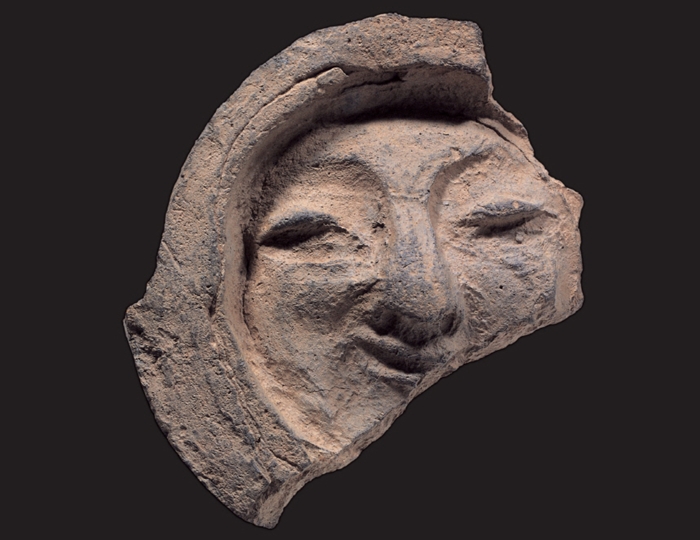
A roof-end tile with a human face. (Cultural Heritage Administration)
By Kang Gahui and Kim Min-Jeung
Large eyes, a sharp nose, and a shy smile.
A roof-end tile with a human face, well known as “The Smile of Silla,” has now been designated as a treasure.
The Cultural Heritage Administration said on Oct. 2 that six cultural artifacts had been named treasures, including the human face roof-end tile of Gyeongju.
The hand-carved roof-end tile was excavated on the site where Yeongmyosa Temple stood during the Japanese colonial era. A roof-end tile, called “Sumaksae” in Korean, is a round-shaped tile attached to a curved tile at the edges of a roof or wall. Instead of a nasty, scary looking face, the smile is meant to soothe all bad spirits and send them back where they came from.
In 1934, Japanese doctor Toshinobu Tanaka bought it at an antique shop in Gyeongju and brought it to Japan, but the tile returned home in 1972 thanks to the persistent efforts of Park Il-hoon, former director-general of the Gyeongju National Museum.
“The human face roof-end tile, coming down from the Three Kingdoms Period, is a well-made artistic piece that represents the outstanding tile-making skill of Silla. This is the first time that a roof tile has been designated as a treasure,” said the Cultural Heritage Administration.
Three large Buddhist banner paintings called “Gwaebul”, a bronze gong of Gyeongseonsa Temple used for the Buddhist temple’s rituals, and the Certificate of Meritorious Subject issued to Jang Cheol (1359-1399), who rendered distinguished services during the first rebellion of the princes in 1398, were also designated as treasures. The Cultural Heritage Administration plans to collect opinions from experts in various sectors and deliberate with the Cultural Heritage Committee before designating them as national cultural assets.
kgh89@korea.kr